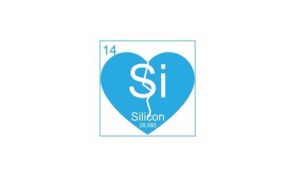
Among a range of options, Silicon is by far the most widely used semiconductor material with good reason. It is easy to fabricate and provides good general electrical and mechanical properties. Also, it forms high-quality silicon oxide that is used for insulation layers between different active elements of the IC. As a result, Silicon can be used to create advanced microprocessors, but also simple diodes; it can be used for ultra-low-power Bluetooth wireless connectivity or for switching power in Industrial applications.
Silicon has long been the semiconductor of choice in Power Electronics, but it has its limits…
 There is another semiconductor material that allows us to create Power Devices that can withstand higher voltages than silicon-based ones can. This material allows the new devices to operate at higher temperatures and to operate at higher frequencies while also taking up less space. This material is Silicon Carbide.
There is another semiconductor material that allows us to create Power Devices that can withstand higher voltages than silicon-based ones can. This material allows the new devices to operate at higher temperatures and to operate at higher frequencies while also taking up less space. This material is Silicon Carbide.

So what enables the combination of Silicon and Carbon to go beyond Silicon in high voltage power domain?
It’s all about the Bandgap!
Silicon Carbide (SiC) technology suits applications as wide-ranging as the additional benefits it brings. In industry, higher powered, smaller, and more energy-efficient machinery is possible and is getting a lot of attention from manufacturers adopting SiC. In additional, Smarter Homes and Cities will have access to cheaper renewable energy while next-generation appliances and transportation, using SiC technology will consume less energy. No doubt, Smarter and Greener Driving will be possible with the application of SiC technology to electric vehicles and chargers.
ST is at the forefront of power-device manufacturing using SiC technology. To find out more about our 650V and 1200V SiC rectifiers and MOSFETS visit http://www.st.com/content/st_com/en/products/sic-devices.html
Author : STMicroelectronics
















